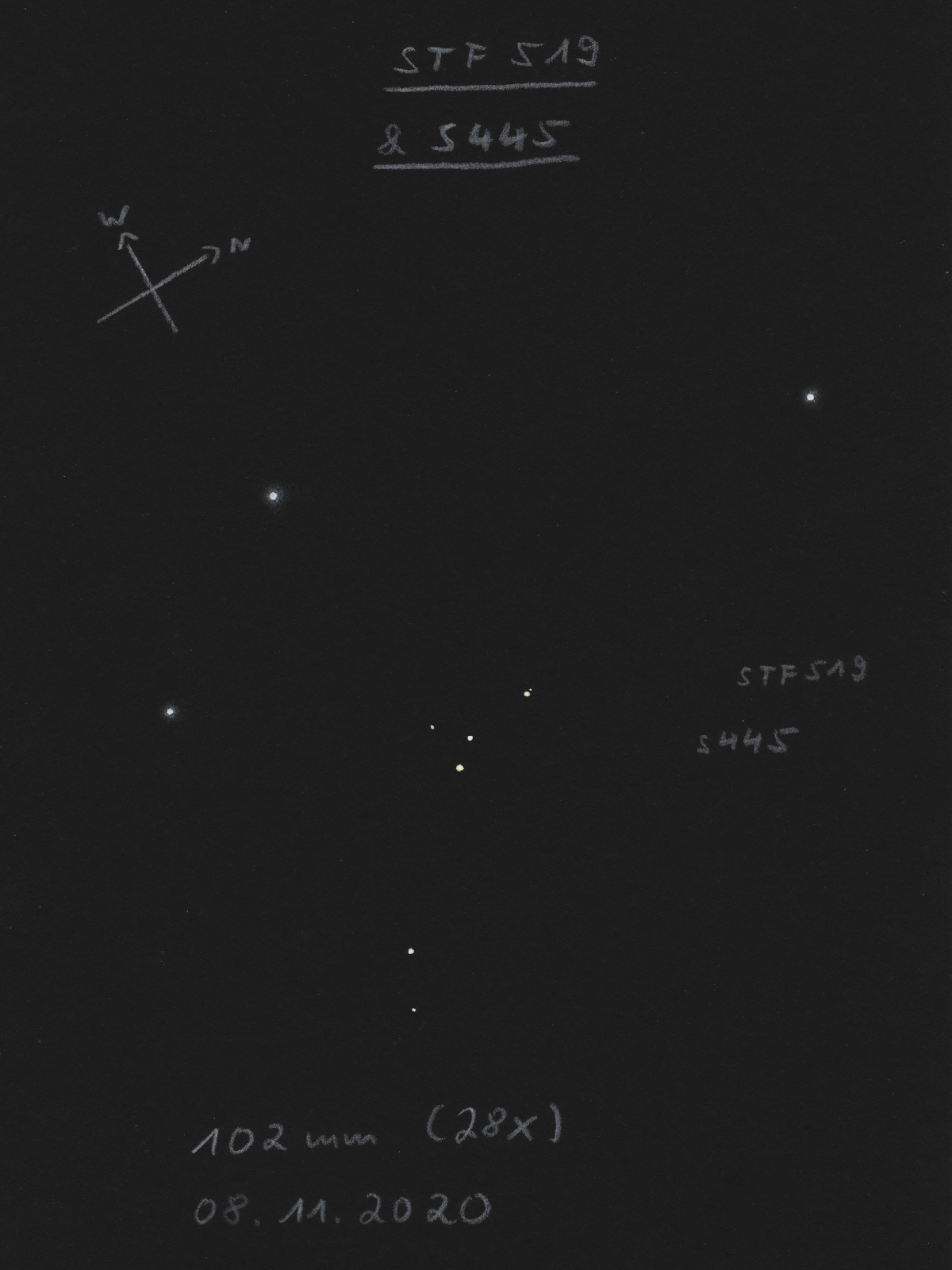Skyguide - Selected objects for every season
The Skyguide is primarily intended to give suggestions for your own observations and will briefly describe selected objects for each season of the year. Both easy and difficult objects will be selected. How difficult an object is depends of course on several factors, especially sky quality, telescope aperture and experience of the observer.
For each object the most important information is given in short form. These are supplemented by photos or sketches. Furthermore, a map, created with the free software Cartes du Ciel (Skychart), is available for a rough orientation. In general, I recommend, to create your own finder charts. The visual description of the object is based mainly on own observations and should serve only as a starting point.
Skyguide 2022-4 (Winter)
We will travel through the constellation Perseus and visit mainly double stars and clusters. Most of the objects are easily observable in a small scope, even under suburban skies. Let's just start with the nearby open clusters NGC 869 and NGC 884, which probably everyone knows. These two clusters are bright enough to present their group character with binoculars even from an urban environment. But NGC 869 hides a little secret that some people have surely already noticed. It is the star pattern Zürn 1. There is nothing more to add to René Merting's description: “The Parachutist, discovered by Katharina Zürn. In the cluster NGC 869 it is worth to have a closer look. In the center of this cluster a small, fine star pattern is visible. Around the 6m.5 bright star V520 Per five stars with magnitudes from 8m.0 form a narrow, outward (resp. southeast) curved arc. With some imagination the arc looks like a parachute and V520 Per is the guy hanging from the parachute. Another possible interpretation arises for all those who know the Glum Cyclops (NGC 7134). They will surely recognize here its friendlier brother, the Laughing Cyclops.” In medium sized binoculars, this small arc of stars is easily visible, even though it is not completely resolved. In a telescope it stands out clearly.
In the eastern part of Perseus two more quite different open clusters are waiting for us. NGC 1528 is worthwhile as a cluster. To some observers it appears divided into two parts. It consists mainly of medium bright and fainter stars. Due to its irregular shape it looks rather oval. In a telescope with 102mm aperture under brightened skies (Bortle 6/7) you can expect a good dozen of stars with small color differences. Under dark skies, NGC 1528 is also impressive in binoculars, but at low magnification it shows up only as a bright, large nebula. Quite different is the nature of NGC 1545, which appears as a cluster only sparsely and stands out little from its surroundings. Nevertheless it is worth observing, because it is dominated by the uneven double star STF 519 (7m.8 & 9m.4, angular separation 17.9") and the multiple star system S 445. These can be observed well even in 16x70 binoculars, though STF 519 requires a little practice, especially in brightened skies. S 445 forms a prominent triangle with its three components A, B & C, with A shining yellowish or orange. This can also be seen well in photographs. The multiple system includes two more components E and D under the designation ES 2604, but their magnitudes are 11m.2 and 14m.8.
Now let's bring some color into the game and have a look at the double star STF 434 in the south of the constellation. Easy to find, quite bright (7m.8 & 8m.3) and with a large angular separation of just under 34" it is easily reachable in practically any binocular and a nice target for observers in the city. The double star shows a nice color contrast: (light) orange and light blue. The color intensity often depends on the used telescope, the magnification and last but not least on the observer. Here only experimenting helps. A rewarding double star in an attractive environment.
As last object we would like to present the open cluster NGC 1245, which already belongs to the older generation with an estimated age of 1 billion years. It is very rich in stars with many fainter members. The observation should better be done under dark sky, then the cluster is visible as a faint nebula even in 16x70 binoculars. Depending on the used aperture individual stars can be seen. The cluster is also known as “Patrick Starfish Cluster”. Patrick Star is a character of the cartoon series “SpongeBob SquarePants”. It probably needs a lot of imagination for this.




